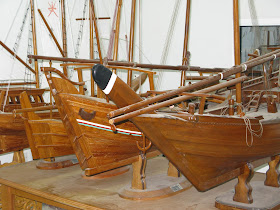ALL THE SAME, BUT ALL
DIFFERENT
Not surprisingly, Oman
is full of mosques. Many are of great beauty, built with as much care and
attention to detail as the cathedrals of Europe. Some are old and others are
new. The Grand Mosque in Oman is only a dozen years old. The vintage of others takes
the mind back into the long reaches of Middle Eastern history.
But the frequency of
them soon engages the attention. We went to Sur, an ancient port city perched
on the Omani coast as it turns left into the Persian Gulf. We saw men building
dhows according to the traditional method. We stood close to the water, looking
back at the city as it stretched around a placid bay. I noticed seven mosques,
which I could easily photograph without moving my position. And I noticed,
perhaps prosaically, that while they were immediately recognisable as mosques,
they were all different.
Of course the Islamic
faith is similarly configured. In Oman, the Ibadhi are in the majority,
followed by the Sunni, with Shi’a making up a definite minority. Within these
main divisions are quite a few others.
But it was in
particular the differing designs of the minarets, sometimes looking like
rockets and sometimes like elongated wedding cakes, that seemed to point into
the heart of the dangers of too glib generalisation and equally of attempts at
a too rigid uniformity. It was the same with the dhows. They were immediately
recognisable as dhows, but they were also all different in their detail.


No comments:
Post a Comment
Thank you for commenting. We appreciate your feedback.